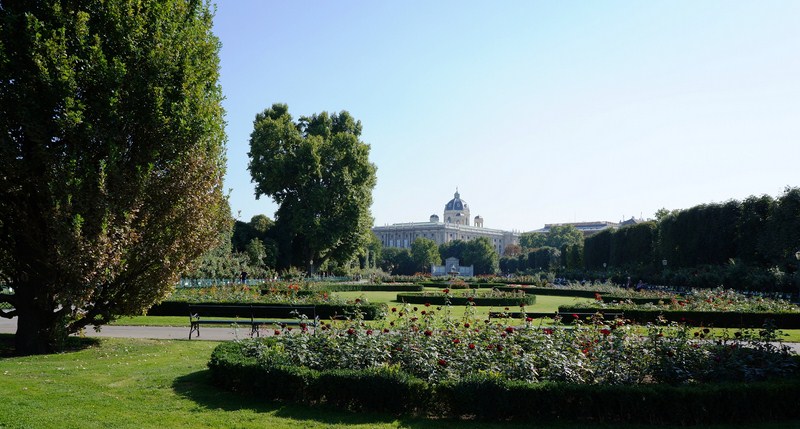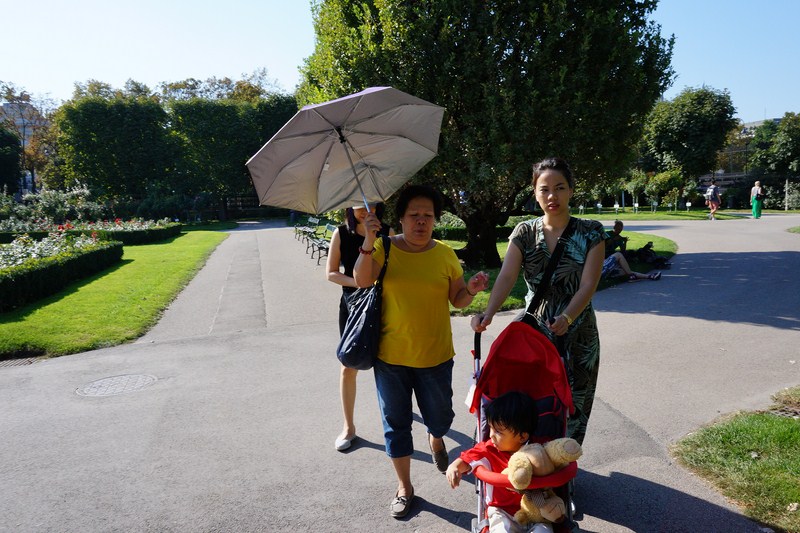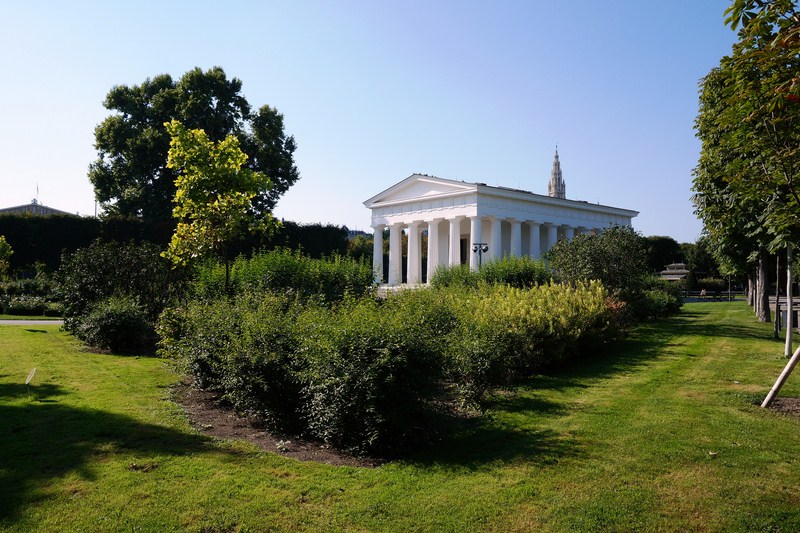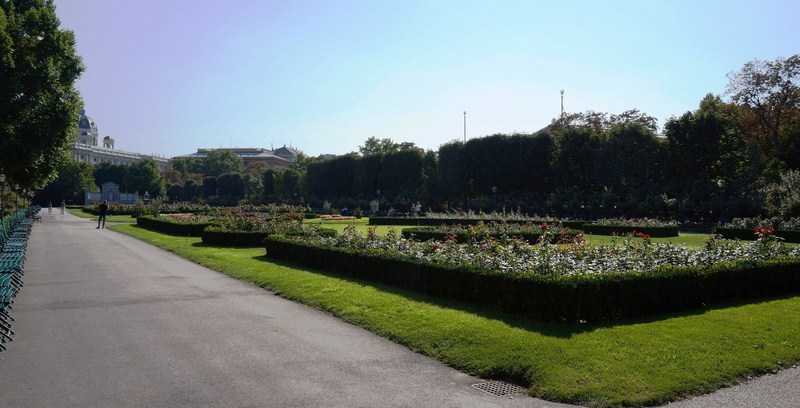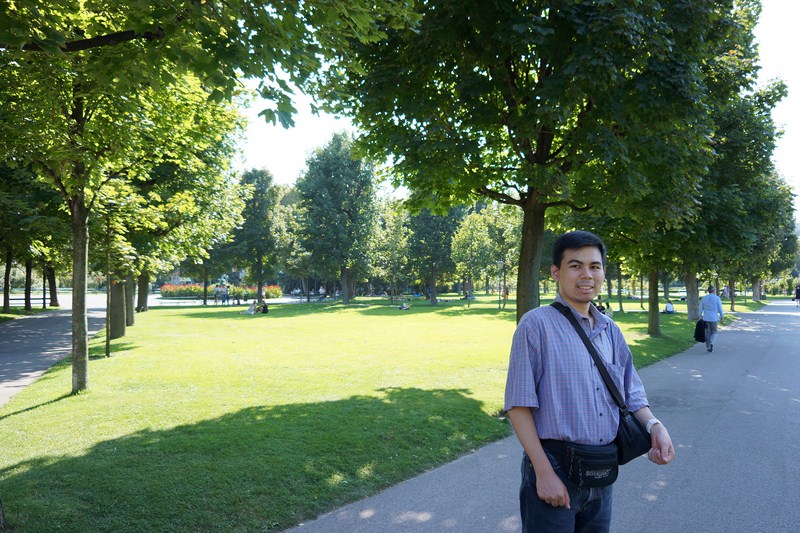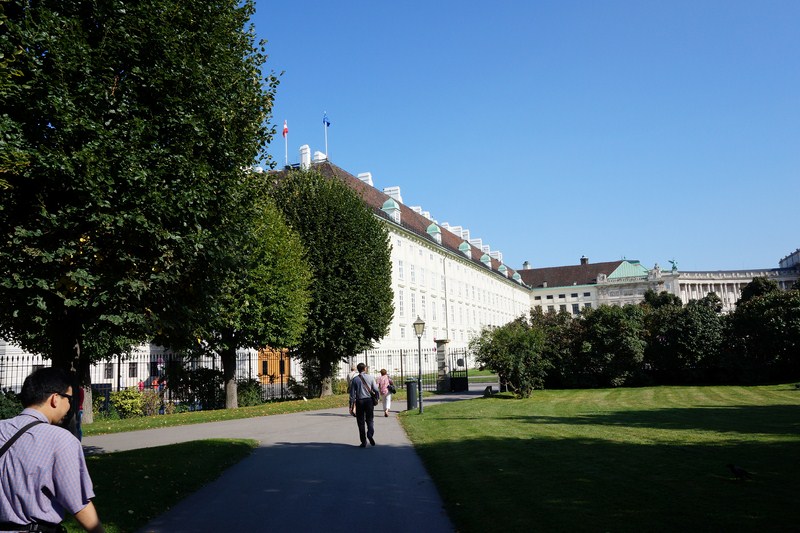The free, accessible Volksgarten (“People’s Garden”), a lovingly maintained public park and garden in the Innere Stadt first district of , offers a relaxing atmosphere in the center of Vienna to the citizens and tourists. Originally used for fortifications, the park was built over the city fortifications (Burgbastei) that were destroyed by Napoleon in 1809. Part of the Hofburg Palace, it is located directly beside the Heldenplatz and the Hofburg buildings.
Check out “Hofburg Palace“
The Volksgarten area, designed in the manner of the Luxembourg Garden in Paris, was laid out in the French Baroque style in 1821 by Ludwig van Remy and its gardening design was done by court gardener Franz Antoine. Now often used by wedding photographers for its romantic scenery, the park is famous for its beautiful rose gardens (with over 3,000 rose bushes of about 400 different cultivars of roses) shady alleys and comfortable park chairs and benches.
Here’s the historical timeline of the park:
- Between 1596 and 1597, a fortress wall was built on the eastern side of park.
- In 1639, additional fortifications were built on the southern side.
- In 1809, these fortifications were destroyed by Napoleon’s French troops.
- Between 1817 and 1821, the area near Ballhausplatz square was converted to gardens originally intended for a private garden for the archdukes. These plans were changed through a proposal by the court garden administration to turn the area into the first public park in the city.
- On March 1, 1823, the park was officially opened to the public.
- Starting in 1825, the name Volksgarten was commonly used.
- In 1862, the gardens were extended toward Ringstraße after the city moat had been filled in.
The white, shining, Neo-Classical Theseus Temple (Theseustempel), a particularly impressive photo scene at the center of the park, is a small-scale replica of the Temple of Hephaestus (Theseion) in Athens. Designed by Pietro di Nobile and completed in 1821, it was originally designed to house the sculpture, of Antonio Canova (who was also involved in the construction of the temple), of Theseus Battling the Centaur. In 1890, Canova’s sculpture at the Theseus Temple was moved to the Museum of Fine Arts.
The park has a couple of cafes. The Cortisches coffee house, built between 1820 and 1823 by Peter Nobile was where Austrian Romantic composers and waltz kings Johann Strauss I and Joseph Lanner performed. The Cafè Meierei, an excellent place to interrupt your walk, was originally built in 1890 as a water reservoir and converted to a milk drinking hall (Milchtrinkhalle) in 1924. Here, you can have a breakfast, a snack or a wiener melange- (coffee with milk). The Milchpavillon was built in 1951 by Oswald Haerdtl.
The Sisi (Empress Elizabeth) Monument, at the northern end of the park, was designed by Hans Bitterlich and Friedrich Ohmann and completed in 1907. A 2.5 m. high statue of a seated Empress Elisabeth, at the center of the monument, was sculpted by Hans Bitterlich from an 8,000 kg. block of Laaser marble. The monument was dedicated on June 4, 1907 in the presence of Emperor Franz Joseph I of Austria.
The Franz Grillparzer Monument, at the southern end of the park, has the seated marble figure of Austrian poet and writer Franz Grillparzer sculpted by Carl Kundmann and completed in 1875. He is shown in contemplation holding a book in his left hand.
The Volksgarten contains two fountains – the Triton and Nymphenbrunnen (Nymph Fountain, built in 1880 by Viktor Tilgner) and the Volksgarten Fountain (erected in 1866 by Anton Dominik Fernkorn).
Café Meierei: Open 9 AM – 9 PM (April – September).
Volksgarten: Dr. K. Lueger Ring, 1010 Vienna, Austria. Open 6 AM – 10 PM (April – October) and 7 AM -5:30 PM (November – March). Website: www.bundesgaerten.at.
How to Get There: there’s a tram stop (Ring/Volkstheater) and subway station (Volkstheater) outside, served by the U2 and U3 train lines and the 1, 2, D, 46, 49, and 71 trams. Entrances are available from Heldenplatz, Burgtheater and Ringstrasse across from the Austrian Parlament (a 3-min. walk).

